| Summary: Whenever a new version of the Mac Operating System is launched, it brings with it enhanced user experience, additional/improved features, and much more. Thus, as soon as a new Operating System is launched, you may want to upgrade your Mac system.
You need to reinstall the Operating System when your Mac becomes slow, gets infected by a virus, or suffers any other OS-related issue. It is to be noted to reinstall macOS might result in data loss. |
|---|
However, you won’t lose your data while upgrading the Mac Operating System. Still, you must take a backup of your data before performing such operations. So, let’s first discuss the ways to back up the Mac data, and then we’ll learn how to upgrade or reinstall macOS.
In case you have lost data on Mac OS due to reinstalling of macOS- simply use Stellar Data Recovery for Mac Software. Advanced software to recover data from all kinds of data loss from your macOS.
How to Back Up Data Before Upgrading or Reinstalling macOS?
Here are some ways to back up your data on Mac:
1: Use Time Machine
Time Machine is the Mac system’s built-in backup feature. To automatically back up your personal data, such as documents, music, photos, apps, and email by using this feature, you need an external storage device.
Follow the given step-by-step instructions to back up your Mac data with Time Machine:
- Plug an external drive into your Mac, such as a USB or Thunderbolt drive, to be used as the backup device.
- Open System Preferences from the dock and clicks Time Machine.
- Click Select Backup Disk to choose the Mac disk which needs to be backed up. When you select the backup disk, a new window pops up, containing the list of all external hard drives connected to your Mac.
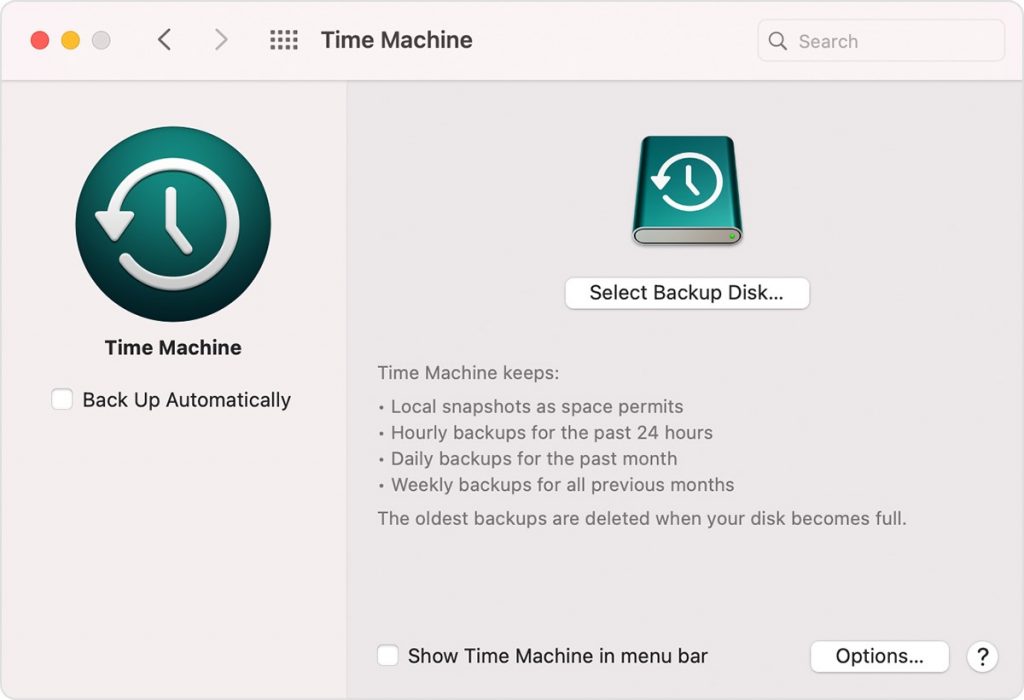
- Choose the external drive you connected and click the Use Disk button to start the backup process.
[NOTE]: Selecting ‘Encrypt backups’ would make your backup password protected. It will prompt you to create a password for the backup. To restore data from encrypted backups, you must provide the backup password.
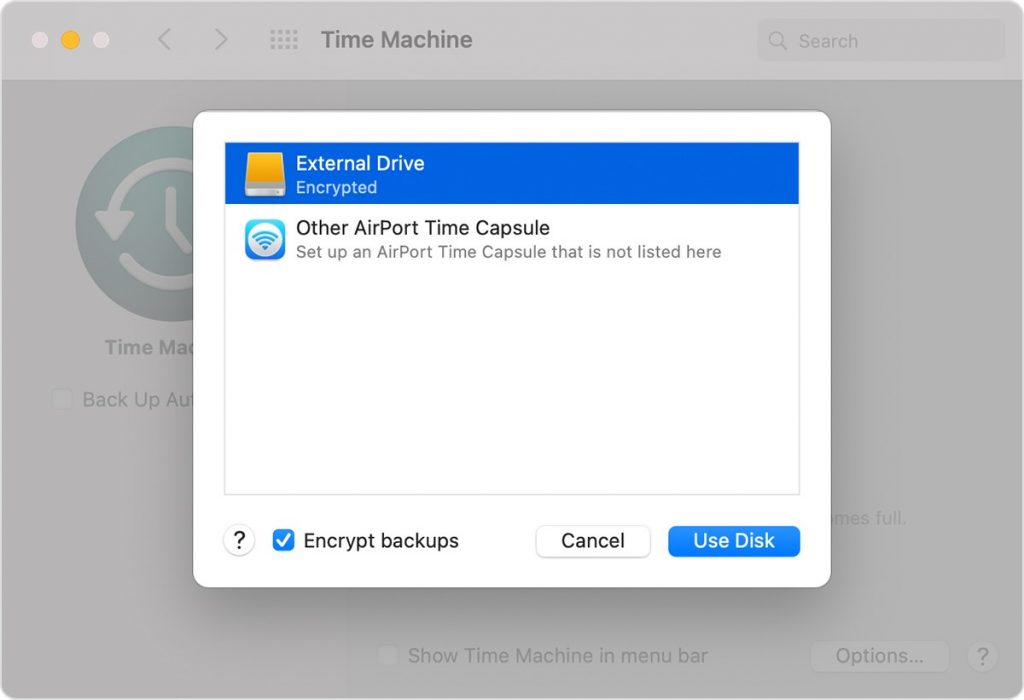
Once the backup process is complete, you’ll get a notification.
2: Copy the Data to an External Drive
You can also simply copy the data to an external hard drive. To do so,
- Connect an external drive, such as a USB, Thunderbolt, or FireWire drive to your mac system.
- Copy the files you want to backup and paste them to the external disk. You can also do this by dragging the files to an external drive.
- Check if all the required files are copied to the external drive.
3: Using iCloud Service
You can also back up your data on iCloud. Follow these steps:
- From the dock, open System Preferences and click
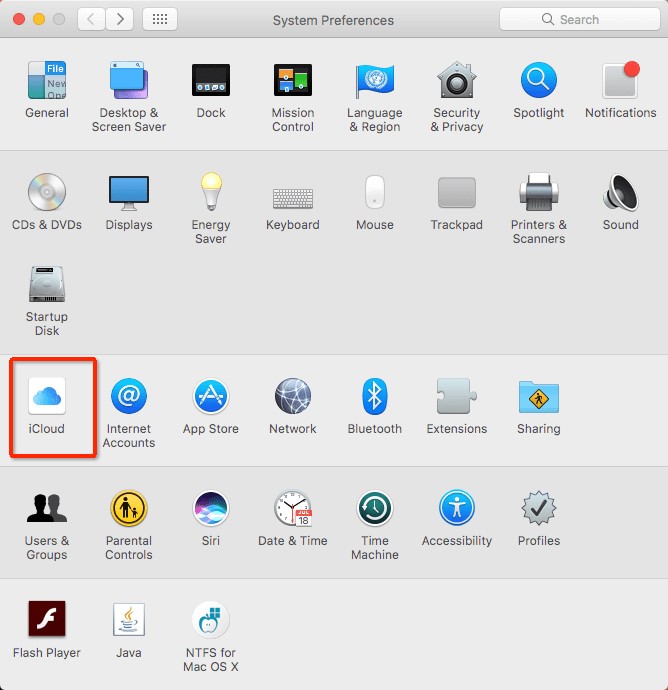
- Click the Options button, select Desktop & Documents Folders, and then click
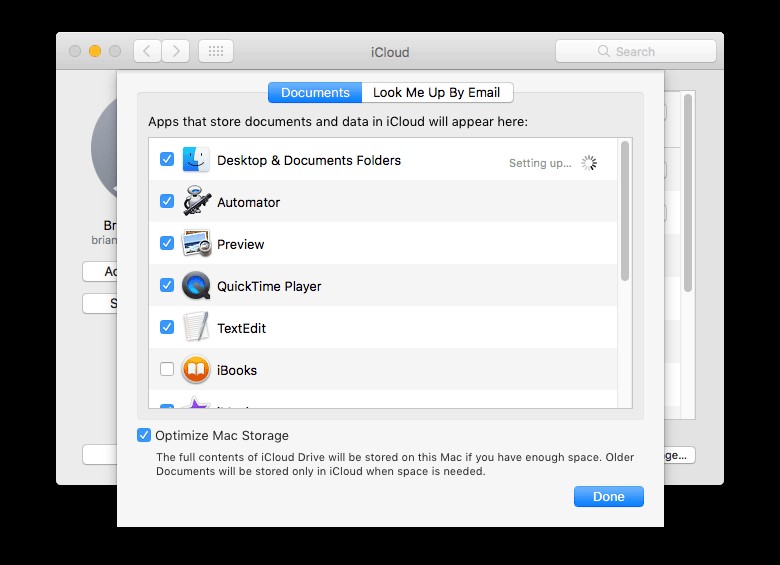
All the data from your Mac Desktop and Documents folder will be copied to iCloud Drive as a cloud backup.
Now, after creating a backup of Mac system data, you can upgrade or reinstall the Operating System without the fear of losing data.
Upgrading and Reinstalling the Mac Operating System
When you upgrade the Mac Operating System, it installs the latest version of the OS. It’s easy to upgrade the Operating System on your Mac. You simply need to open System Preferences and then click Software Update to upgrade.
Here are the steps to reinstall macOS:
- Start your Mac system in macOS Recovery Mode.
Depending upon the type of processor – Apple silicon or Intel processor, follow the instructions below to enter into the macOS Recovery Mode:
- Apple silicon: Press the power button to power ON your Mac system and keep it pressed until you see a window with a gear icon labeled as Options. Next, choose Options and click Continue.
- Intel processor: Connect your Mac system to the internet (if not connected). Power ON the Mac system. While it starts, instantly press and hold Command (⌘)-R keys simultaneously. Keep the keys pressed until you see an Apple logo or other start-up screen.
By following the above instructions, you’ll be able to launch the macOS Recovery utility window.
- From the utility window, choose Reinstall macOS, click Continue, and follow the instructions.
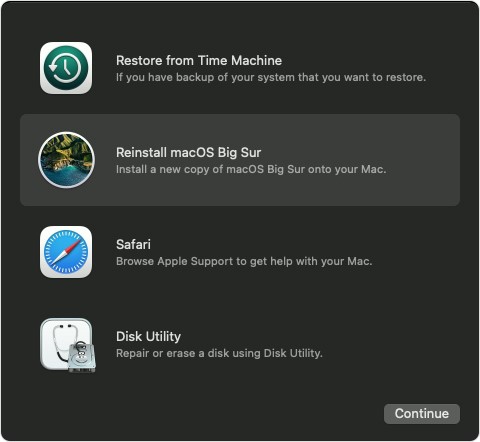
- Let the system complete the reinstallation process.
[NOTE]:
- Don’t close the lid of your Mac or put it to sleep during the OS reinstallation process.
- If you’re prompted to unlock your Mac disk, provide the password you use for logging in to your Mac.
- Choose reinstallation on Macintosh HD, if the installer gives you a choice between Macintosh HD or Macintosh HD – Data.
With the above steps, you’ll be able to reinstall the macOS.
Conclusion
Ideally, you must not lose any data when you upgrade the Mac Operating System. However, due to some technical issues, you may encounter data loss after upgrading the OS. To avoid data loss, you can back up your Mac data, by following the ways mentioned in this post, before upgrading or reinstalling the macOS.









